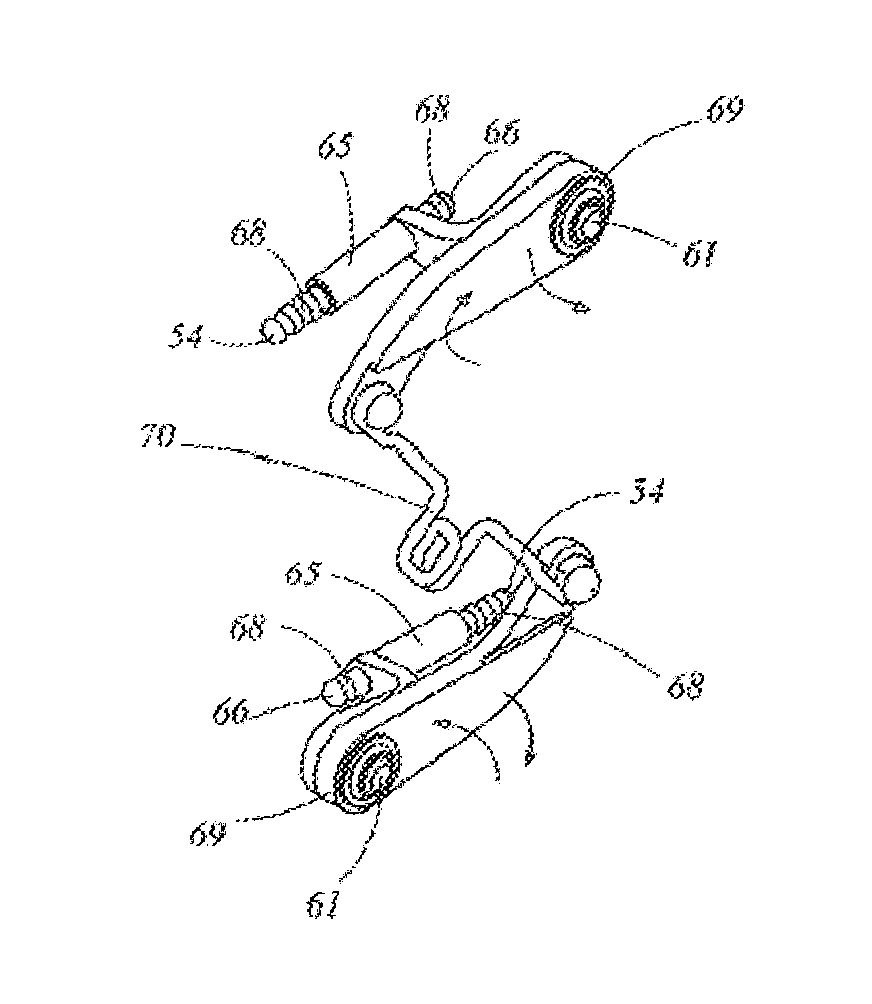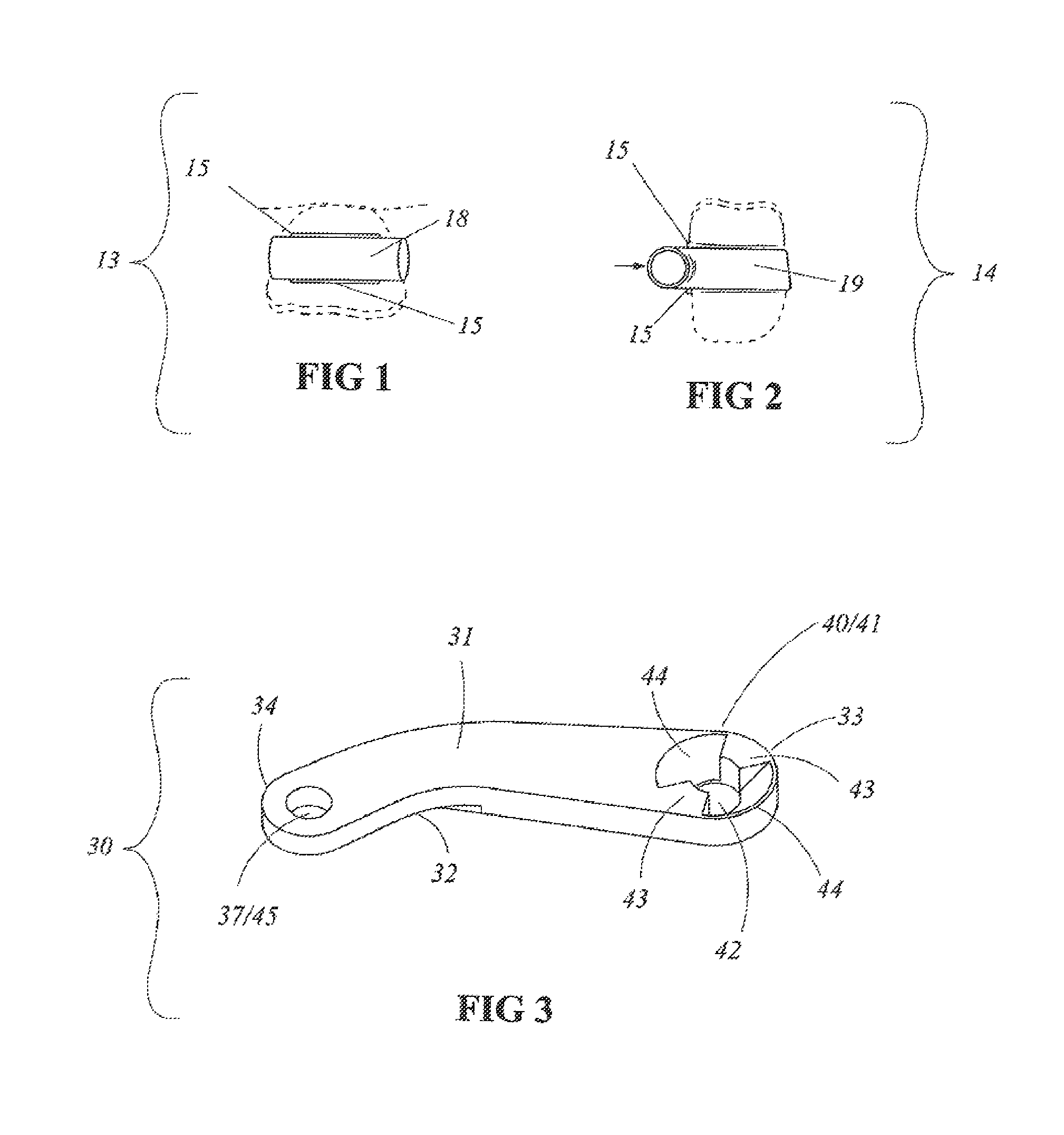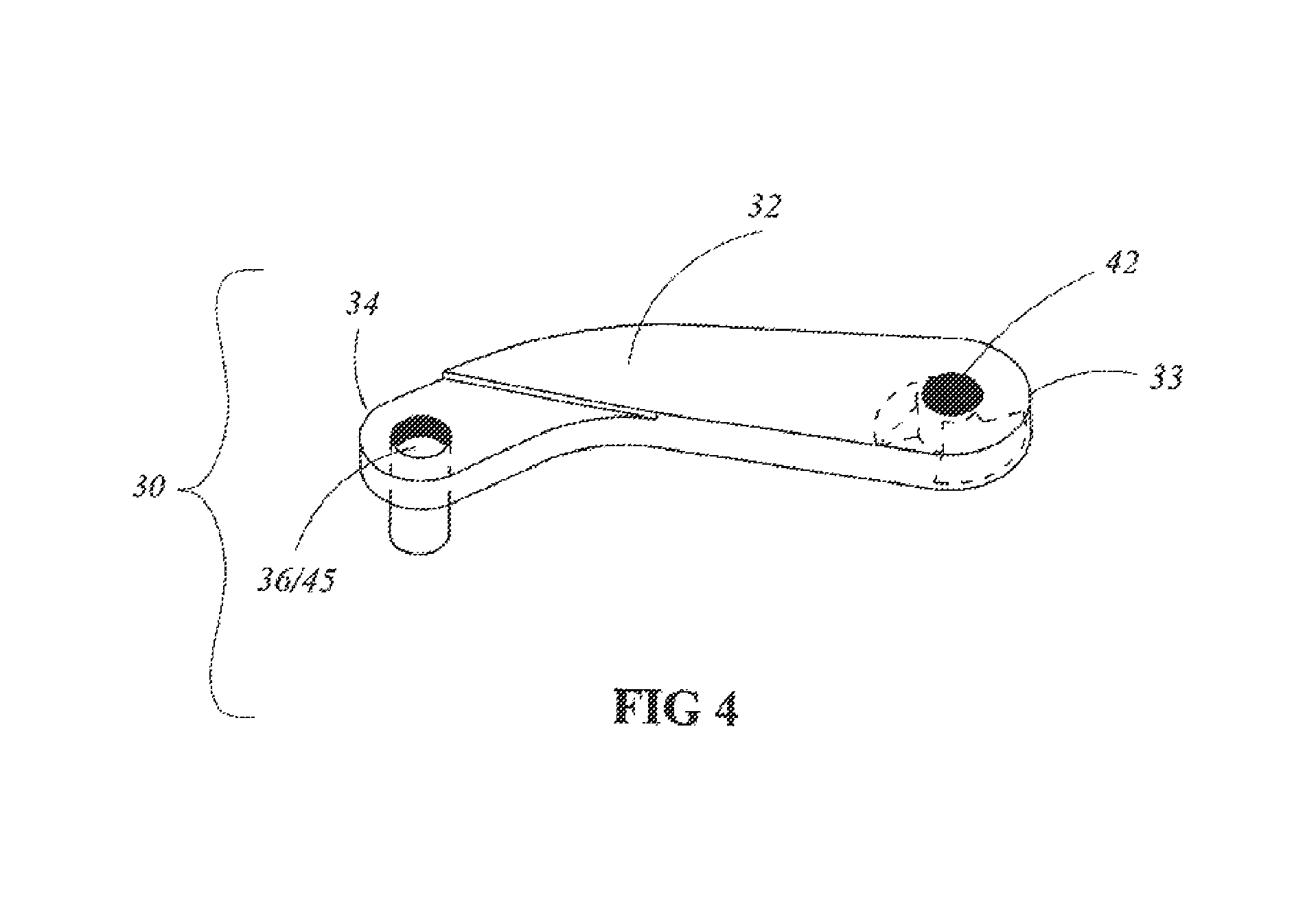Dental occlusion correcting system
a technology of occlusion correction and correcting system, which is applied in the field of dental occlusion correction system, can solve the problems of weakening a structure which must withstand, affecting the normal mastication of the mouth, and undesirable use of screws for adjustmen
- Summary
- Abstract
- Description
- Claims
- Application Information
AI Technical Summary
Benefits of technology
Problems solved by technology
Method used
Image
Examples
Embodiment Construction
[0056]The best mode for carrying out the invention is presented in terms that disclose a preferred embodiment of a dental occlusion correcting system (DOCS) 10. The DOCS 10 is specifically designed to simplify and expedite the correction of Class II malocclusions. The DOCS consists of left and right bite correcting structures, configured to be adjustably attached to the outer surface of either a right dental arch, a left dental arch or to right and left dental arches.
[0057]The preferred embodiment of the DOCS 10, as shown in FIGS. 1-2, 4-6, and 14, is comprised of the following major elements: upper and lower molar attachment structures 13, 14, consisting respectively of an upper head gear tube 18, a lower lip bumper tube 19, and an orthodontic band 15, as shown in FIGS. 1 and 2; upper and lower loosely attached linkages 11, 12, as shown in FIGS. 9 and 10, consisting of a link base 30, as shown in FIGS. 3-4, and a link pivitor 50, as shown in FIGS. 5 and 6; a force module 70, as sho...
PUM
 Login to View More
Login to View More Abstract
Description
Claims
Application Information
 Login to View More
Login to View More - R&D
- Intellectual Property
- Life Sciences
- Materials
- Tech Scout
- Unparalleled Data Quality
- Higher Quality Content
- 60% Fewer Hallucinations
Browse by: Latest US Patents, China's latest patents, Technical Efficacy Thesaurus, Application Domain, Technology Topic, Popular Technical Reports.
© 2025 PatSnap. All rights reserved.Legal|Privacy policy|Modern Slavery Act Transparency Statement|Sitemap|About US| Contact US: help@patsnap.com



